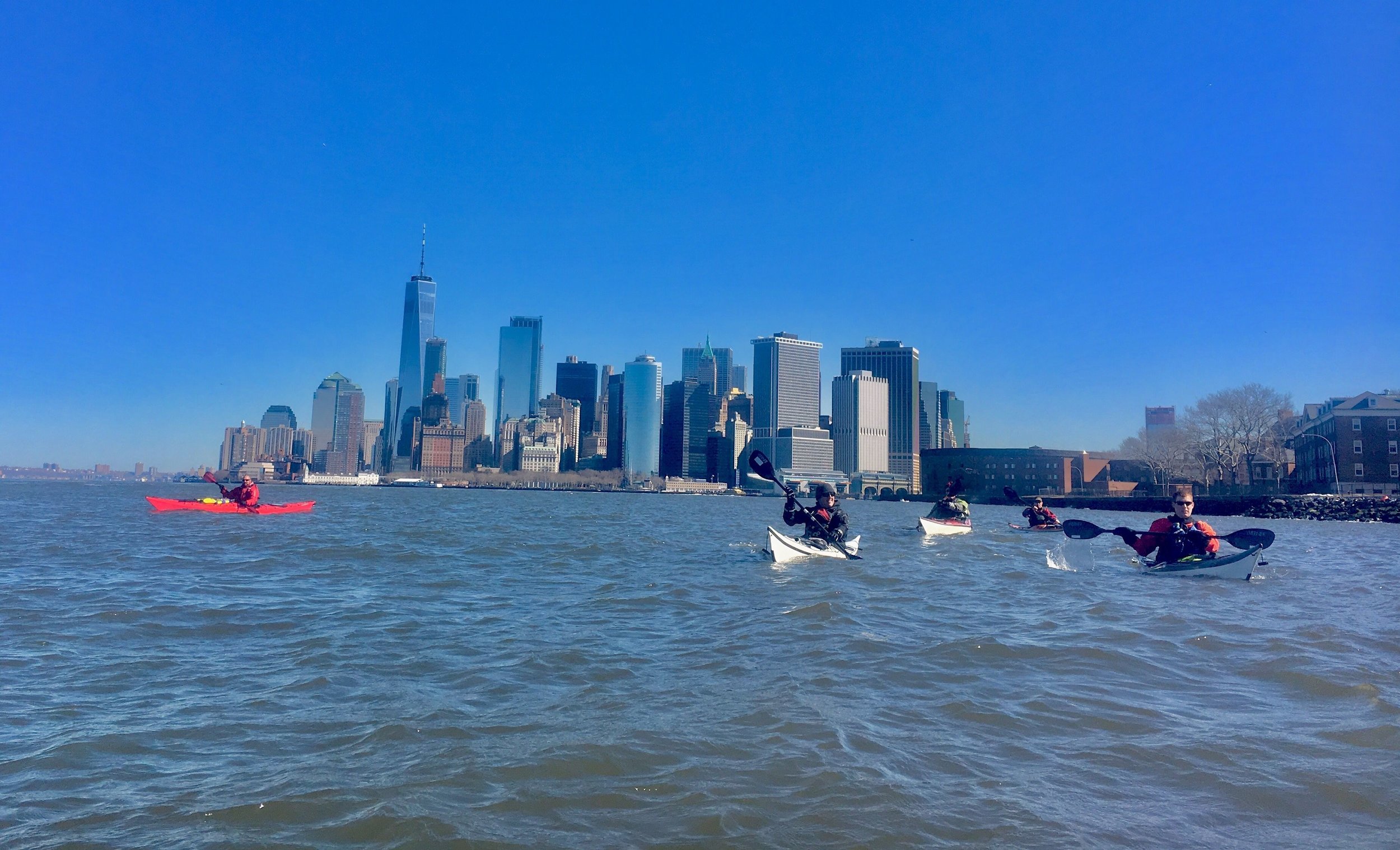Circumnavigation of New York City







This weekend I was able to knock off a kayaking trip of the bucket list. Granted this wasn’t high on the list, but it was definitely one of those paddles that you want to complete at some point because of its uniqueness in terrain. It is the crème de la crème of urban paddles: Circumnavigating the Island of Manhattan in New York City.
This 29-nautical mile trip is not a trip for novices or the feint of heart. Between the hazards of heavy freighter and ferry traffic, significant tidal currents, and the lack of places to land along the way, the mileage is only an inconvenience. Our journey took a start to finish time of just over nine hours and I figure I burned a solid 2,500 calories (although my Garmin estimates it was around 3,500).
We put in at the Hudson River at Inwood Park on the north side of the island and did a counter-clockwise route. This brought us down the Hudson, up the East River, and then up the Harlem River back to the Hudson. No matter which way you do a circumnavigation of the island, you must time it with the tidal currents.
As I mentioned in a previous post, the Hudson is a technically a tidal fjord. Tidal waters will push up the Hudson all the way to Albany and with 2-3 knt currents that switch direction about every six hours. Since we did our homework, our initial push south down the Hudson was with the outgoing tide giving us paddling speeds of about six to seven knots making the initial leg down to Governor’s Island (about about 12.5 nm) in two and a half hours. And that is with pretty minimal effort.
At Governor’s Island we hung out for about 45 minutes to make sure the tidal currents shifted so we could ride the tide up the East River to Hell's Gate (the intersection of the Harlem and the East River). While we were able to take advantage of this current, we did not get the same push as we did coming down. Plus we were now paddling into a 10-12 knot headwind, which just makes it feel a lot harder.
This introduces a unique tidal characteristic of the area. Against what, to me at least, would be conventional thinking, the Harlem River floods south and ebbs north. This made the last eight miles of the trip a pretty good work out as paddling speeds dropped to about two to three knots as we paddled against the current. It wasn’t until about the last three miles of the journey when the tides were just about at slack and the current starts to stand still when there was at least only a neutral affect on paddling effort.
All in all, it was a great day of paddling. I did this with a group of paddlers who are aspiring BCU 5-Star kayakers – paddlers who are looking to push themselves and develop skills for advance sea kayaking. So I met some great people to go kayaking with, I learned a lot about paddling in heavy use trafficable areas and the impacts of tides and currents on the environment, and the weather was sunny, albeit it chilly.